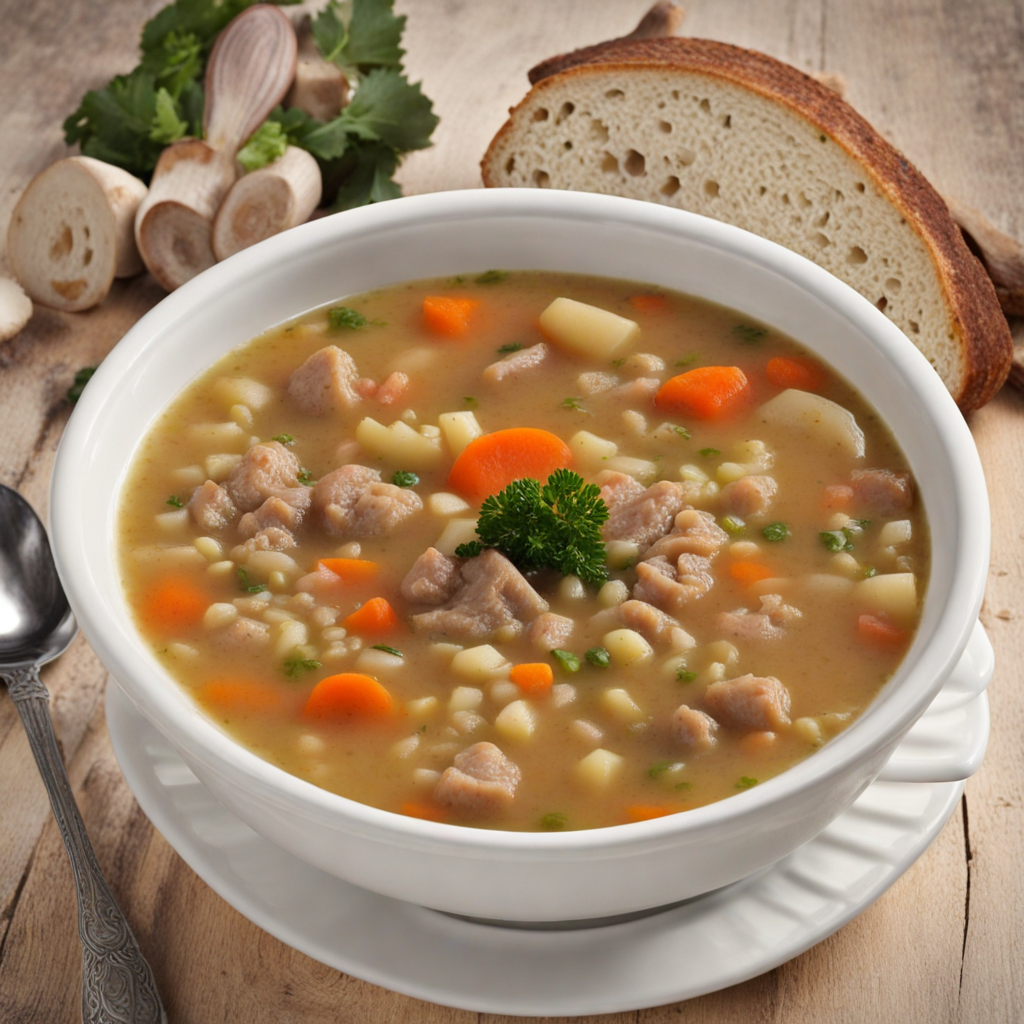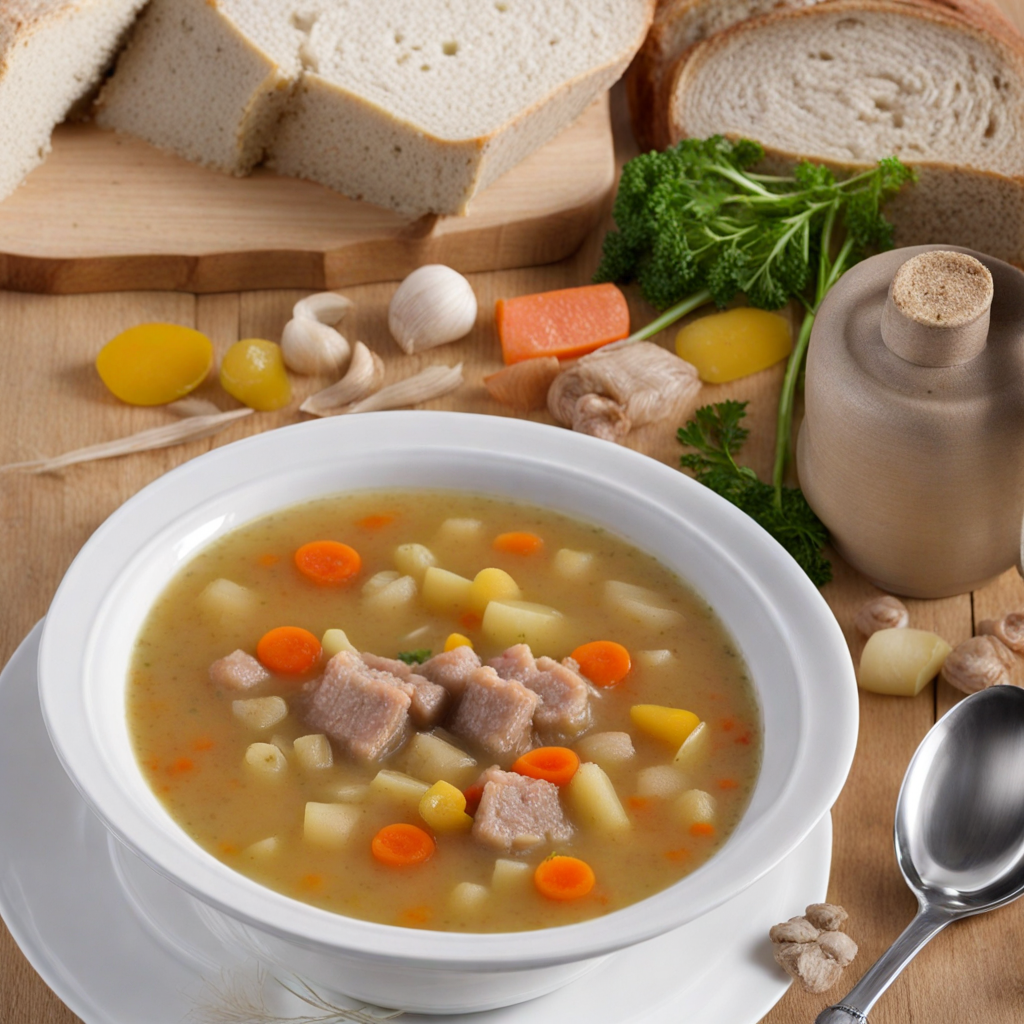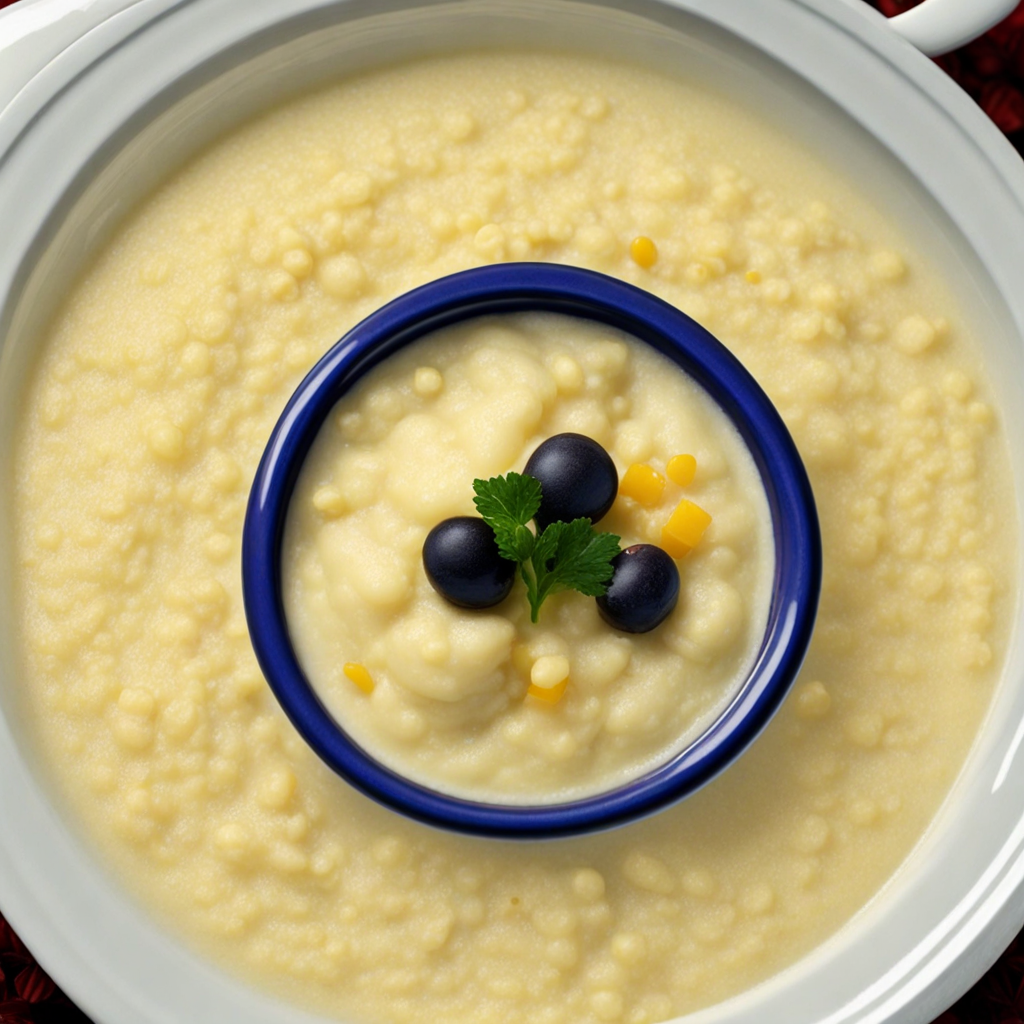Gerstensuppe
Gerstensuppe, a traditional dish from Liechtenstein, is a hearty barley soup that embodies the rustic flavors of Alpine cuisine. At its core, the dish features pearl barley, a grain known for its nutty taste and chewy texture. This wholesome ingredient is simmered to perfection alongside a medley of vegetables, often including carrots, potatoes, and onions, which contribute vibrant colors and a comforting sweetness to the soup. The broth is typically enriched with an assortment of herbs and spices, creating a fragrant aroma that beckons you to indulge in a warm bowl of this delightful soup. The preparation of Gerstensuppe often involves slow cooking, allowing the flavors to meld beautifully. As the soup simmers, the barley releases its starches, lending a creamy consistency to the broth without the need for dairy. Some variations of Gerstensuppe may incorporate chunks of meat, such as smoked ham or sausage, adding a savory depth that complements the earthiness of the barley. Topped with fresh herbs like parsley, the soup is not just a meal; it's a celebration of the simple yet robust ingredients that define Liechtenstein's culinary heritage. Gerstensuppe is more than just a dish; it's a cultural experience that reflects the warmth of Liechtenstein's hospitality. Often enjoyed during cold winter months or family gatherings, it provides a sense of comfort and satisfaction, perfect for sharing with loved ones. Each spoonful delivers a taste of the region's history and traditions, inviting those who try it to savor the rich, wholesome flavors that make Gerstensuppe a beloved staple in Liechtenstein's cuisine.
How It Became This Dish
The History of Gerstensuppe: A Culinary Gem from Liechtenstein Nestled between Switzerland and Austria, the small principality of Liechtenstein boasts a rich cultural tapestry that reflects its historical ties and geographical position. Among its culinary treasures is Gerstensuppe, a hearty barley soup that encapsulates the essence of Liechtenstein’s agricultural heritage and communal spirit. This dish is not merely a staple; it is a symbol of the resilience and resourcefulness of the Liechtenstein people throughout the ages. Origins of Gerstensuppe The origins of Gerstensuppe can be traced back several centuries, with barley being one of the oldest cultivated grains in Europe. Archaeological evidence suggests that barley was domesticated around 10,000 years ago in the Fertile Crescent and gradually spread throughout Europe. By the time it reached the alpine regions, including what is now Liechtenstein, barley had become a vital staple food, particularly suited to the harsh climatic conditions and poor soil of the mountainous terrain. In Liechtenstein, barley was not just a food source; it represented sustenance for the common folk. The agrarian society relied heavily on grains, and barley, in particular, was favored for its hardiness and nutritional value. Gerstensuppe emerged as a way to utilize this versatile grain, combining it with readily available local ingredients like vegetables, herbs, and sometimes meat, creating a nourishing dish that could sustain families through the long winters. Cultural Significance Gerstensuppe holds a special place in Liechtenstein’s culinary culture, serving not only as a source of nourishment but also as a communal dish that brings people together. Traditionally, this soup has been prepared in large quantities, making it ideal for gatherings and celebrations. In rural communities, it is common to see families and friends coming together to share a pot of Gerstensuppe, reinforcing bonds and fostering a sense of community. As Liechtenstein is known for its strong traditions and folk customs, Gerstensuppe has become intertwined with local festivities. During harvest time, when farmers would gather to celebrate the fruits of their labor, Gerstensuppe would often be served as a symbol of gratitude and abundance. It is also a popular dish during winter festivals, where its warmth and heartiness provide comfort against the chill of the alpine climate. Ingredients and Preparation The beauty of Gerstensuppe lies in its simplicity and adaptability. At its core, the soup consists of barley, which is simmered until tender, along with a medley of vegetables such as carrots, potatoes, and onions. Fresh herbs like parsley and thyme are often added for flavor, while smoked meats, such as bacon or sausage, can provide an additional depth of taste. The preparation of Gerstensuppe is a reflection of the resourcefulness of Liechtenstein’s people. In times of scarcity, it was common to utilize whatever ingredients were available, leading to variations in the recipe. For instance, in some households, dried mushrooms or beans might be included, while others might opt for seasonal vegetables. This adaptability has allowed Gerstensuppe to evolve over time while maintaining its fundamental character. Development Over Time As Liechtenstein has modernized, so too has Gerstensuppe. In the 19th and early 20th centuries, the principality underwent significant changes, with industrialization and urbanization reshaping the way people lived and ate. While traditional dishes like Gerstensuppe remained popular, they began to be influenced by international culinary trends. The influx of new ingredients and cooking techniques introduced by immigrants and travelers contributed to the evolution of the dish. In contemporary Liechtenstein, Gerstensuppe is often featured in restaurants and is celebrated as part of the national cuisine. Chefs have started to experiment with the soup, incorporating gourmet elements while still honoring its rustic origins. For instance, some modern interpretations might include gourmet toppings, such as truffle oil or artisanal bread, elevating the dish from a humble farmer’s meal to a sophisticated dining experience. Despite these modern adaptations, the soul of Gerstensuppe remains unchanged. It is still a dish that evokes nostalgia and comfort, reminding the people of Liechtenstein of their agricultural roots and the importance of community. The soup continues to be served at family gatherings, festivals, and even in school cafeterias, ensuring that the tradition is passed down to future generations. The Global Influence As globalization has spread culinary traditions across borders, Gerstensuppe has found its way into the kitchens of food enthusiasts beyond Liechtenstein. It is often featured in European food festivals and international culinary events, where chefs showcase traditional dishes from different cultures. This exposure has helped to elevate Gerstensuppe’s status, allowing it to be appreciated by a broader audience. Food bloggers and culinary influencers have also played a significant role in popularizing Gerstensuppe, sharing recipes and stories that highlight its cultural significance. This newfound recognition not only celebrates Liechtenstein’s culinary heritage but also encourages a dialogue about the importance of preserving traditional foods in a rapidly changing world. Conclusion Gerstensuppe is more than just a barley soup; it is a culinary embodiment of Liechtenstein’s history, culture, and community spirit. From its humble beginnings as a sustenance dish for farmers to its modern interpretations in gourmet cuisine, Gerstensuppe has stood the test of time, evolving while remaining true to its roots. As the world continues to grapple with issues of sustainability and food security, Gerstensuppe serves as a reminder of the value of local ingredients, communal eating, and the importance of culinary traditions. It is a dish that invites people to gather, to share stories, and to appreciate the richness of their cultural heritage. In every spoonful of Gerstensuppe, one can taste the history of Liechtenstein—a history that is still being written today.
You may like
Discover local flavors from Liechtenstein







